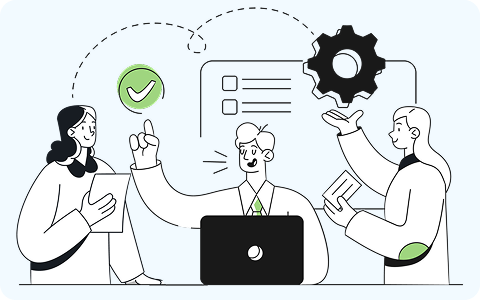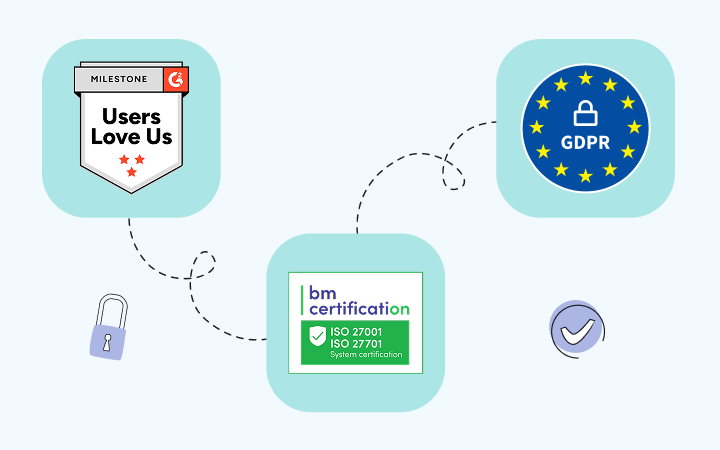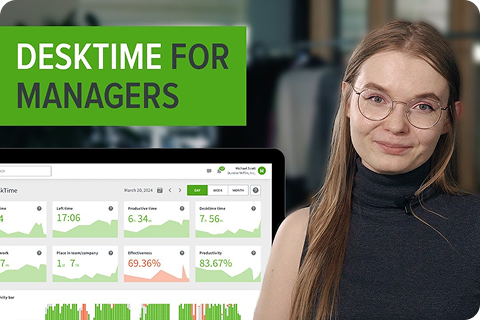


🍪 Allow functional cookies?
We use Zendesk messaging software for easy communication with our clients. Zendesk uses cookies to interact with website visitors and provide chat history.
See our Privacy Policy for more info. You can change your cookie preferences at any time in our Cookie Settings.





It’s not about another workplace well-being course. What your team really wants is flexibility, trust, and clarity in how they work. Learn how DeskTime can help make that happen.
According to data from Gallup, employee wellness drives engagement, cuts burnout, and slashes costly turnover, directly impacting your bottom line.
When employees feel workplace well-being is a priority, they’re 4.4 times more likely to be engaged at work. That means more focus, better teamwork, and stronger results. Simply put, caring pays off.
Employees with well-being support are 73% less likely to burn out, reducing turnover and lost productivity. Often, it’s smart policies, clear goals, and flexibility that protect your bottom line.
Replacing employees drains time and money. When employee well-being is a priority, people are 53% less likely to job hunt. A supportive culture keeps talent and reduces hiring costs.
With the right time tracking tool, you can support employee well-being, build trust, and create a flexible, high-performing workplace.

These days, it’s harder for companies to attract great talent. It’s not just about pay—people want better benefits, flexibility, and a focus on employee well-being. Time tracking is an easy, affordable way to support employee wellness through flexible hours, work-from-anywhere, hybrid work, and even shorter workweeks, all without sacrificing productivity.

Time tracking often gets a bad rap, but when used right, it can boost workplace well-being and highlight the importance of employee well-being. The right tool balances workloads, gives employees more control over their time, and reduces micromanagement, cutting down on timesheets and constant check-ins. It’s all about trust and flexibility.

You can’t solve a conflict if you don’t know what really happened. Time tracking helps leaders spot issues early and make fair calls. It’s a helpful tool for leadership and employee well-being, giving HR the facts they need. It also supports employee wellness by creating a more transparent, balanced workplace.

These DeskTime features are designed to support your team’s well-being and create a healthier, more balanced work environment.
Forget manual entries and distractions. With DeskTime, time tracking runs on autopilot—zero effort needed.
With DeskTime, you can see your employees' arrival and departure times, analyze their productivity, schedule shifts, oversee absences, maintain a healthy work-life balance, keep track of specific projects, and more.
When employees fear being misunderstood or micromanaged, they resist time tracking. Openness and trust turn it into something helpful.

After more than a decade in the business, we’ve seen it time and time again—when employees push back against time tracking, it’s rarely about the tool itself. Most of the time, it comes down to uncertainty and fear. They worry it won’t reflect their work fairly, they’re unsure what management is trying to measure, and they don’t want to feel reduced to a bunch of numbers they can’t control. That’s where trust and transparency come in. With open communication and clear guidelines, time tracking can shift from feeling like surveillance to something that supports your team, not controls them.
How you start with time tracking makes all the difference. Skrivanek used DeskTime to enable remote work. See how they got their team on board without disrupting trust or workflow.

Schedule a chat with our product expert to learn how DeskTime can be tailored to fit your needs and requirements.